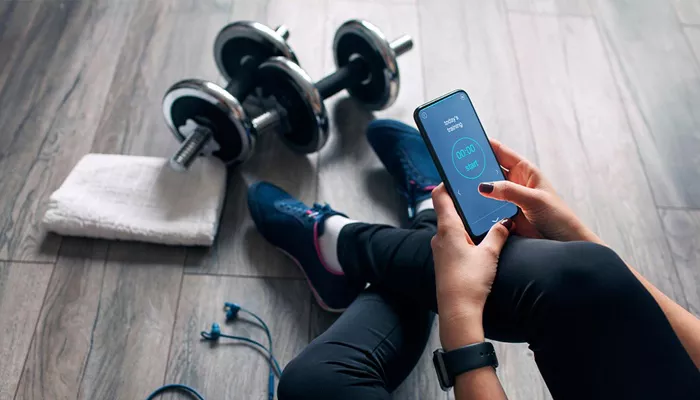Many people believe that improving fitness requires spending hours at the gym several times a week. However, this is not true for most people.
Regular physical activity, even in small amounts, can still make a difference. A recent study published in the European Journal of Applied Physiology found that doing a five-minute strength training routine daily for four weeks significantly improved both physical fitness and mental health in people who were mostly inactive.
The workout itself was simple and not complicated. It included bodyweight exercises like squats, press-ups, sit-ups, and calf raises. The key was in how the exercises were done: they were performed consistently and progressed gradually over time.
Though the study involved only a small number of participants, it clearly shows that small amounts of strength training can provide many benefits, especially for beginners. I looked into why this works and how you can use this knowledge to improve your own health efficiently.
The Workout
The routine consisted of the following exercises, each done for 10 repetitions:
Chair squat
Wall press-up
Chair recline (a sit-up done sitting in a chair with less movement)
Heel drop (a calf raise)
Participants were 22 healthy but mostly inactive adults, aged 32 to 69. They performed each repetition slowly, lowering for five seconds and then lifting quickly in about one second. For example, during the chair squat, they would sit down over five seconds and then stand up normally.
They could choose when to do the exercises during the day. They could do all sets together or spread them out.
When participants found an exercise easy (rating it 5 out of 10 in difficulty for two days), they moved on to a harder version. The progressions included:
Chair squat → one-leg chair squat → pistol squat
Wall press-up → one-arm wall press-up → table press-up → knee press-up → full press-up
Chair recline back → chair recline with legs straight → full sit-up
Heel drop → heel drop overstretch → one-leg heel drop overstretch
This method uses basic strength training principles, like gradually increasing difficulty and working major muscle groups. It’s not a magic trick but an effective way to improve strength for beginners.
What This Means for You
This message is not for marathon runners or intense athletes. It is for people who want to improve their health but struggle to find time, energy, or motivation to exercise regularly.
For this group, small amounts of consistent, progressive exercise can bring real benefits.
Dr. Richard Blagrove, a senior lecturer in physiology, explains that even small amounts of exercise improve health. He cites research showing that burning an extra 500 calories a week (about 70 calories per day) reduces the risk of death compared to complete inactivity.
The same applies to resistance training. Just one challenging set of an exercise can boost strength and improve how well our bodies work in daily life.
Fitness coach Joe Wicks also supports this idea. He visits workplaces and sees a clear difference between people who do no exercise and those who find a little time for some activity, like a short walk or a quick workout.
Those who move more feel healthier, have more energy, less stress, and better mental health. Wicks encourages people to find even five to 15 minutes a day to move.
Other Easy Ways to Move More
“Exercise snacking” is another helpful approach. It means doing very short bursts of exercise multiple times a day.
A study by the University of Essex and University of Suffolk showed that 16 minutes of bodyweight exercises spread throughout an eight-hour workday improved leg strength and balance.
Another review found that brief, intense exercises under 60 seconds, done three times a day (such as cycling or stair climbing), can improve fitness and exercise performance in inactive adults.
This works because the body adapts to the demands we place on it, a concept called the SAID principle (Specific Adaptations to Imposed Demands).
If you sit all day, your muscles tighten and weaken. If you move regularly, your heart and lungs get stronger, and your muscles grow and improve.
This is why beginners can make big progress from small changes, while experienced exercisers need bigger challenges.
Key Takeaways and a Simple Workout Plan
The main lesson is that small amounts of exercise can go a long way, especially for beginners.
The study shows that short workouts improve strength and mental health in inactive adults. Other research suggests these benefits also include better heart and lung fitness.
If you want to add exercise to your busy day, start by choosing one exercise for each of five basic movements: push, pull, hinge, squat, and carry.
Try doing 8 to 12 repetitions of each exercise, one to three times per day. For example:
Push: Wall press-up x 8-12
Pull: Bent-over row with a rucksack x 8-12
Hinge: Good morning x 8-12
Squat: Chair sit-to-stand x 8-12
Carry: Suitcase carry with a rucksack x 8-12 meters each hand
You can do these after waking up, on your lunch break, or even while waiting for the kettle to boil.
When an exercise feels easy, try a harder version or increase the weight.
This plan requires no special equipment and works well for people with very little time.

